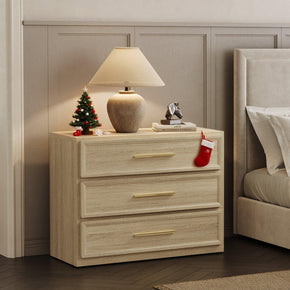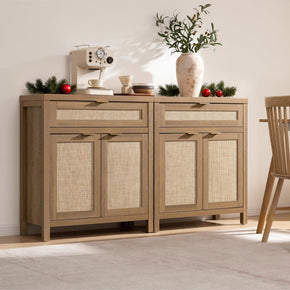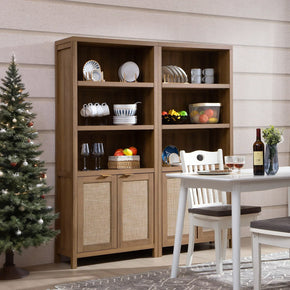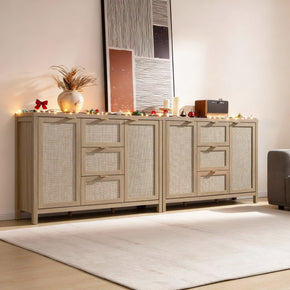Modern American Aesthetic vs Scandinavian Minimalism

Finding Your Style Through Balance and Contrast
Designing a home that feels both personal and timeless often means choosing between (or blending) two of today’s most enduring styles: Modern American and Scandinavian Minimalism. Each offers its own mood and visual rhythm—one bold and grounding, the other light and calming. Whether you lean into one or pull from both, finding harmony in your space starts with understanding how these aesthetics shape your experience of home.
Embracing the Richness of Modern American Style
Modern American interiors celebrate contrast and substance. This design approach often favors deep wood tones, weighty silhouettes, and structured lines that anchor a room with presence. It's not just about size—it’s about gravitas. From dark-toned sideboards that define a dining space to sculptural nightstands that double as living room accents, these pieces add visual impact without overwhelming.
This aesthetic values craftsmanship and detail. Fluted textures or subtle ridges on furniture surfaces create dimension without fuss. The interplay between bold furniture pieces and soft textiles—think velvet cushions, woven rugs, or linen drapes—completes the look.
The Calm Clarity of Scandinavian Minimalism
Where Modern American design emphasizes depth, Scandinavian Minimalism favors lightness and function. Spaces are intentionally simplified, with a focus on clean lines, soft wood tones, and furniture that does more with less. Natural light is embraced. Neutral palettes—especially whites, pale woods, and soft grays—keep the environment open and airy.
Furniture in this style is often compact and versatile. Two-drawer end tables or slim cabinets offer quiet utility in a way that blends seamlessly with the surroundings. Texture still plays a role—woven panels, smooth surfaces, or the subtle grain of natural wood all contribute to warmth without clutter.
Finding the Balance Between Two Worlds
For many homes, the sweet spot lies somewhere in the middle. A dark wood anchor piece can ground an otherwise minimalist room. Conversely, a light rattan cabinet or understated bookshelf can soften the edges of a more robust setup. The key is intentionality—choosing furniture and decor that complement each other without creating visual noise.
This kind of layered styling lets you enjoy the best of both aesthetics. Start with one strong piece—like a statement sideboard, fluted bookshelf, or striking nightstand—then build around it with textures and tones that enhance the overall mood of your space.
Let the Furniture Set the Tone
Sometimes, one thoughtful piece is all it takes to steer the style of a room. Whether it’s the sharp contrast of a black oak cabinet or the texture of a light-wood nightstand, furniture sets the tone before anything else. By focusing on form, texture, and tone, you can tell a visual story that reflects who you are—and where you feel most at home.
No comments



















0 comments